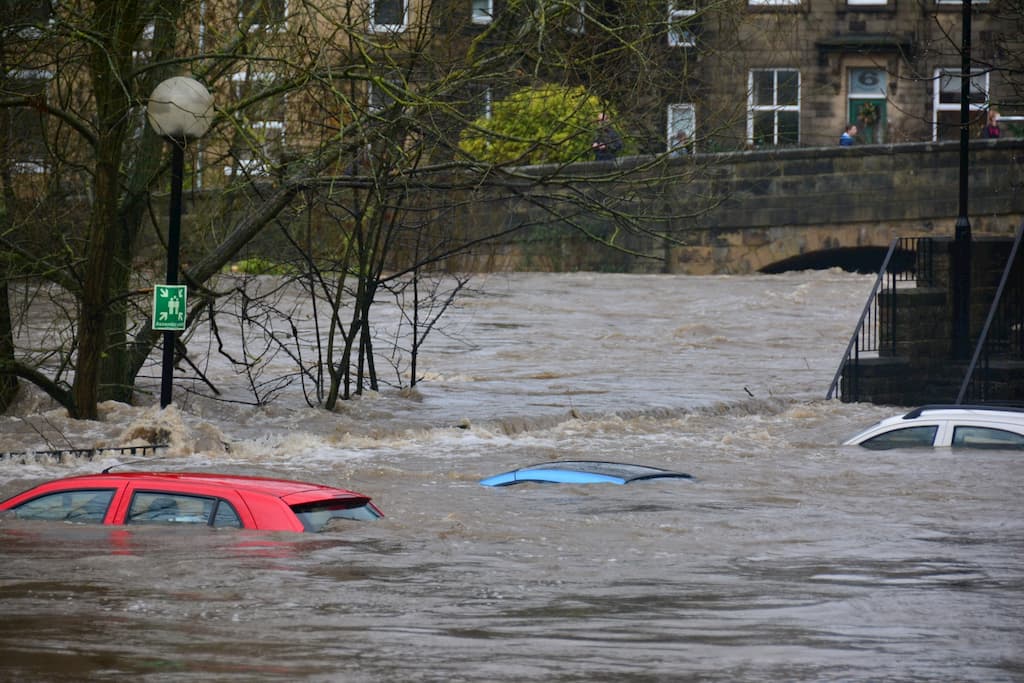One of the best ways for your business to cope with a natural disaster is to have a plan before the disaster strikes. Being prepared will become your most valuable asset where clear thinking becomes difficult during emergency situations.
We have created the following guide to help you and your business prepare for a natural disaster to make it easier for you to minimise losses, maintain business continuity and recover quickly.
Cyclone and severe storm
Cyclones are violent storms that can damage your business through flooding, high winds, storm surges and flying debris. Although cyclones are seasonal generally running from November to April, it is wise to be prepared for a cyclone year-round.
The following list provides advice on how to prepare your property for a cyclone. It is essential that you plan well in advance, have an emergency kit packed and that everyone in the workplace understands the plan of action.
Bushfires
Large areas of Australia suffer from the threat of bushfires and with the fire season running for longer each year, it is crucial to prepare and plan to decrease the risk of damage. During a bushfire, you and your employee’s safety depends on what processes and preparations you have implemented.
This bushfire preparation checklist outlines a few basic steps to help you prepare and ensure everyone in the workplace understands the plan of action.
Fire suppression equipment (including its maintenance and a testing schedule) is essential to protecting your employees and ensuring that your business is not devastated by the loss of your assets and associated income with operational downtime due to fire.
Floods

In recent years, areas of Australia have been ravaged by flooding and torrential rain. Unlike cyclones and bushfires, floods are not necessarily seasonal, which means you need to be prepared year-round.
The key to minimising damage is planning well in advance. Deciding whether to stay and defend your property or evacuate is something you should decide as soon as possible so that you can put the appropriate measures in place.
Have an emergency kit packed and make sure everyone in the workplace understands the plan of action.
The flood preparation checklist provides advice on preparing for flooding, including what to do before, after and during a flood.
Preparing an emergency kit
If a natural disaster strikes and you need to evacuate, having an emergency kit can help keep your business running in another location.
Keep your emergency kit where you can quickly and easily retrieve it. Alternatively, store your kit safely and securely off-site.
Record in your business's emergency plan the contents of your emergency kit and make someone responsible for keeping your kit up to date.
Key items to include in your emergency kit include the following:
Evacuating your business
Having an evacuation procedure avoids confusion and even possible injury during an emergency situation. When creating your evacuation procedure you should consider the following:
- Decide what circumstances would trigger an evacuation.
- Make sure evacuation alarms are distinctive and your staff recognise these.
- Decide who is responsible for authorising an evacuation and designate a warden to help during the evacuation
- Work out evacuation routes and exits and a designated assembly point for staff to gather. Create diagrams that feature these and post them in easy to see places.
- Decide who will remain to shut down critical operations during an evacuation.
- Develop procedures for dealing with any hazardous materials.
- Find a way of accounting for staff (and customers) after an evacuation.
Once you have an evacuation plan in place, make regular drills part of your business. This helps staff familiarise themselves with evacuations and gives you a chance to review your existing procedures.
Help with Insurance After a Natural Disaster
After a natural disaster you should contact your broker before you begin cleaning up and removing goods. Even if you do not know the full extent of the damage, your insurance company can tell you what they will need to know to support your insurance claim. Always follow the advice of the insurer, as you may not be covered for unauthorised repairs.
Your insurer may ask you to record or photograph damage to your premises, fixtures, vehicles, stock, customer records and equipment. Or you may be told to wait for an insurance assessor to inspect your property before you begin cleaning.
Many policies require you to take reasonable steps to minimise the loss - for example, by placing a tarp over a broken roof, or moving undamaged items to a safe and secure place.
One of the best ways for your business to cope with a natural disaster is to have a plan before the disaster strikes. Being prepared will become your most valuable asset where clear thinking becomes difficult during emergency situations.
We have created the following guide to help you and your business prepare for a natural disaster to make it easier for you to minimise losses, maintain business continuity and recover quickly.
Cyclone and severe storm
Cyclones are violent storms that can damage your business through flooding, high winds, storm surges and flying debris. Although cyclones are seasonal generally running from November to April, it is wise to be prepared for a cyclone year-round.
The following list provides advice on how to prepare your property for a cyclone. It is essential that you plan well in advance, have an emergency kit packed and that everyone in the workplace understands the plan of action.
Bushfires
Large areas of Australia suffer from the threat of bushfires and with the fire season running for longer each year, it is crucial to prepare and plan to decrease the risk of damage. During a bushfire, you and your employee’s safety depends on what processes and preparations you have implemented.
This bushfire preparation checklist outlines a few basic steps to help you prepare and ensure everyone in the workplace understands the plan of action.
Fire suppression equipment (including its maintenance and a testing schedule) is essential to protecting your employees and ensuring that your business is not devastated by the loss of your assets and associated income with operational downtime due to fire.
Floods

In recent years, areas of Australia have been ravaged by flooding and torrential rain. Unlike cyclones and bushfires, floods are not necessarily seasonal, which means you need to be prepared year-round.
The key to minimising damage is planning well in advance. Deciding whether to stay and defend your property or evacuate is something you should decide as soon as possible so that you can put the appropriate measures in place.
Have an emergency kit packed and make sure everyone in the workplace understands the plan of action.
The flood preparation checklist provides advice on preparing for flooding, including what to do before, after and during a flood.
Preparing an emergency kit
If a natural disaster strikes and you need to evacuate, having an emergency kit can help keep your business running in another location.
Keep your emergency kit where you can quickly and easily retrieve it. Alternatively, store your kit safely and securely off-site.
Record in your business's emergency plan the contents of your emergency kit and make someone responsible for keeping your kit up to date.
Key items to include in your emergency kit include the following:
Evacuating your business
Having an evacuation procedure avoids confusion and even possible injury during an emergency situation. When creating your evacuation procedure you should consider the following:
- Decide what circumstances would trigger an evacuation.
- Make sure evacuation alarms are distinctive and your staff recognise these.
- Decide who is responsible for authorising an evacuation and designate a warden to help during the evacuation
- Work out evacuation routes and exits and a designated assembly point for staff to gather. Create diagrams that feature these and post them in easy to see places.
- Decide who will remain to shut down critical operations during an evacuation.
- Develop procedures for dealing with any hazardous materials.
- Find a way of accounting for staff (and customers) after an evacuation.
Once you have an evacuation plan in place, make regular drills part of your business. This helps staff familiarise themselves with evacuations and gives you a chance to review your existing procedures.
Help with Insurance After a Natural Disaster
After a natural disaster you should contact your broker before you begin cleaning up and removing goods. Even if you do not know the full extent of the damage, your insurance company can tell you what they will need to know to support your insurance claim. Always follow the advice of the insurer, as you may not be covered for unauthorised repairs.
Your insurer may ask you to record or photograph damage to your premises, fixtures, vehicles, stock, customer records and equipment. Or you may be told to wait for an insurance assessor to inspect your property before you begin cleaning.
Many policies require you to take reasonable steps to minimise the loss - for example, by placing a tarp over a broken roof, or moving undamaged items to a safe and secure place.













